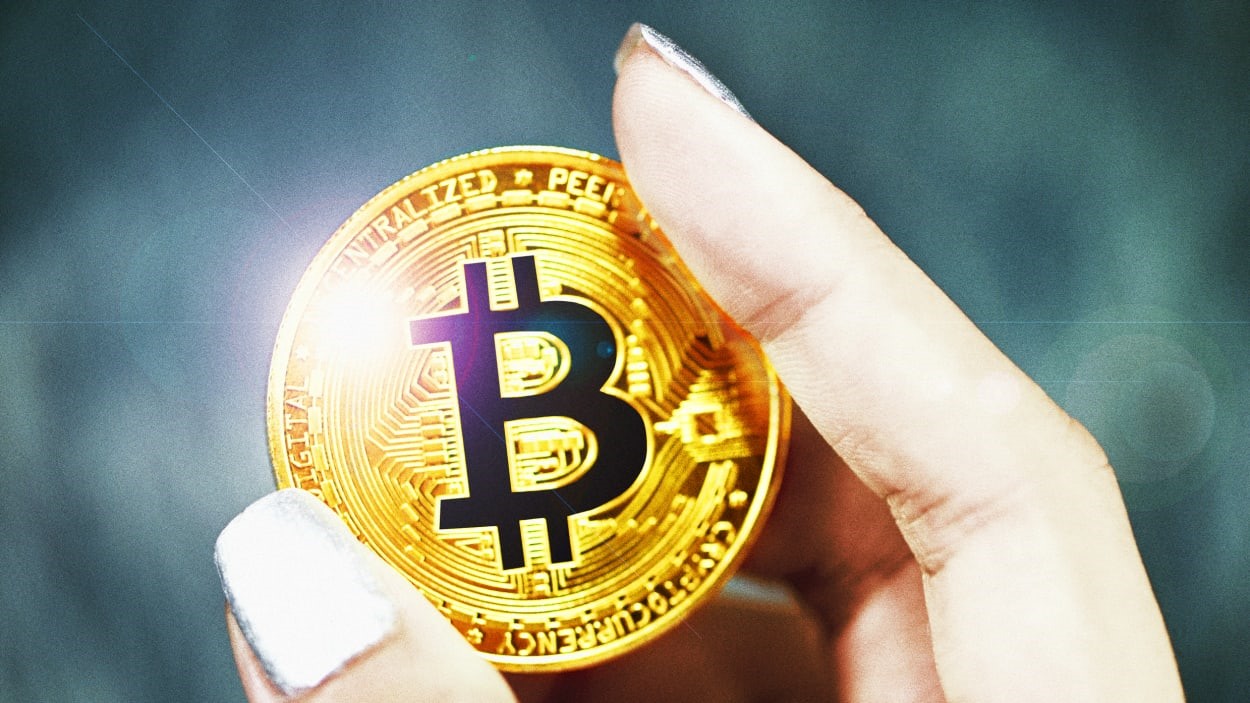What’s behind Bitcoin’s huge comeback?
By Jeff Wilser
It’s been a rough two years for the bitcoiners. Most of the news from Crypto Land had the odor of fraud, scams, meltdowns, price crashes, and villains, such as Sam Bankman-Fried. NFTs fizzled. The “metaverse” became a punchline. AI stole the spotlight.
But quietly, without much hype, Bitcoin has once again emerged from the dead. “In terms of price, [2023 was] an absolutely fucking remarkable year for Bitcoin,” says investor Meltem Demirors, as the cryptocurrency recently topped $45,000 for the first time since April of 2022.
Many see the “crypto winter” as a purge that cleansed the system. “We had all that huge selling pressure, and we’re done, we bottomed out,” says Peter McCormack, host of the What Bitcoin Did podcast, referring to the FTX-fueled negativity. “We washed all that crap away.”
Bitcoin is now up over 160% since the start of 2023. “We’re in the early stages of a bull market,” says Cory Klippsten, CEO of Swan, a Bitcoin media and investment company. Klippsten is so confident in an emerging bull run—and its influx of Bitcoin newbies—that he’s boosting Swan’s monthly advertising budget from $30,000 to more than a $1 million. He’s also grown his staff from 90 people to 150.
From faraway, this all looks perplexing, as the price churned higher while the news seemed bearish. This left investors confused and skeptical. “It’s the most hated rally,” says Demirors. “Investors are tired of hearing about Bitcoin. Tired of looking at Bitcoin.” Because many bitcoiners didn’t expect the price to jump so soon, says Demirors, “everyone hates this rally.”
But now bitcoiners can point to specific catalysts for a bull run. “The ETF is coming,” says Isaiah Jackson, a Bitcoin educator and author of Bitcoin and Black America, referring to the widely speculated (and coveted) spot ETFs from BlackRock and other financial institutions, which (they expect) will make it easier for the masses to buy Bitcoin, further pushing up the price.
Then there’s the “halving,” which has an almost mystical role in the crypto space. Roughly every four years, the rewards earned by Bitcoin miners (as an incentive to do it) are chopped in half, which helps keep the supply of Bitcoin scarce. “We know what the market cycle does in regards to halvings,” says Jason Williams, author of Bitcoin: Hard Money You Can’t F*ck With, referring to accompanying price pumps.
These are the surface reasons. But then there’s the deeper stuff. Critics of Bitcoin say that it’s a Ponzi scheme, arguing that it’s inherently worthless and the only reason the price goes up is that a “greater fool” buys it as well, but at some point the music will stop. McCormack agrees that, yes, a Ponzi scheme is in the mix, but says don’t look at Bitcoin.
“The interest alone on the U.S. debt is approaching one trillion a year,” says McCormack, who argues that the government will keep “printing money” (in the form of more debt) to keep the wobbly financial system from collapsing, but this only exacerbates the problem. He expects the U.S. government to keep printing money until the system breaks, and he sees Bitcoin as the ultimate hedge. (This is a common bitcoiner worldview.) “The debt system is a Ponzi,” says McCormack. “Holding your money in euros or dollars is a huge fucking risk.”
Jackson, the Bitcoin and Black America author, remains so bullish on Bitcoin, in part, because he’s so bearish on the U.S. dollar. “I believe we’re already in a recession, they just haven’t told everybody,” says Jackson. While by most measures the economy looks healthy (e.g. historically low unemployment), Jackson believes you can see the real impact of inflation in grocery stores and a drop in demand for entertainment. Jackson imagines that in a recession, Bitcoin will reveal its true strength—an alternate store of value that’s decoupled from mainstream finance. (It’s also possible, of course, that in a recession people will have less money and choose not to spend it on Bitcoin. This hasn’t been tested.)
When you believe that Bitcoin is the future, you gobble up as much as you can and you don’t really change your “investment strategy” when the price crashes—you just buy more at a discount, or in crypto-speak you “buy the fucking dip.” McCormack keeps all his money in Bitcoin except for a three-month cashflow. He doesn’t even see this as investing. “I don’t consider myself an investor anymore,” says McCormack. “If you’re an investor, you’re buying it as a trade. I’m just a bitcoiner. I just believe that the best place to have any disposable money is in Bitcoin.”
Klippsten uses dollar cost averaging to purchase Bitcoin on a set schedule—and that schedule is daily. Every day, he makes an automated purchase regardless of the price, which mean he’s been steadily accumulating Bitcoin throughout the crypto winter. Most bitcoiners embrace some version of this strategy: Buy as much as you can whenever you can. (Exhibit A: permabull Michael Saylor, who keeps hoovering Bitcoin, and recently called the looming Bitcoin spot ETF the “biggest development on Wall Street in 30 years.”)
Still, there were some lessons learned from the last bear market. While longtime Bitcoin “hodlers” (i.e. holders of a cryptocurrency who buy and hold regardless of price) were unscathed by the crash (if they didn’t sell), others bought more exotic financial instruments that tried to squeeze extra yield. Investors tried to rehypothecate Bitcoin by plunking it on exchanges (and earning interest) like Celsius and Voyager; both of these went belly-up and investors lost millions.
“Any time I’ve tried to be clever or cute, I’ve fucked up and done dumb things,” says Demirors. She’s now more wary of “dodgy exchanges” that promise juicy passive income from hosting your Bitcoin, and she also warns about trying to “time the market,” as in only buying at the absolute bottom. “A ton of people were sidelined in cash and thought we’d go back below $20K,” says Demirors, who knows a guy who wanted to invest $20 million at that price point, but it never happened so he missed the party. This is why Demirors now follows a strategy she calls KISS, for Keep it Stupid Simple: She parks Bitcoin in her retirement plan and doesn’t sweat the short-term volatility. “I sleep well at night knowing I have a level of Bitcoin exposure that works for me.”
As for where all this is going? “Price predictions are stupid, really dumb,” says Williams, but when pressed he says that he’d be “hugely disappointed if we don’t blow through six figures” in this upcoming cycle. McCormack acknowledged the folly of price predictions, but says, “I don’t see it ever going sub-$20K again” and wouldn’t be surprised by a $150,000 or a $500,000 Bitcoin. Klippsten thinks that by the end of 2025, “I would consider anything sub-$350K reasonable.” Demirors demurred from a concrete number but predicts “higher highs and higher lows.”
Then again, no one really knows where this is headed, or even why the price is where it is today. All we know is the price. Demirors, a longtime and respected analyst in the space, says that, yes, of course there are “second-order” narratives like the halving and market dynamics, but at the end of the day, “the biggest thing in Bitcoin is just the fucking price. It’s taken me a long time to accept this because we want to believe there’s more, but it’s price. It’s price.” (She expanded on this in a recent X/Twitter thread.)
Her point is dead simple and tough to refute: When the price of Bitcoin plunged in late 2021, people stopped caring about Bitcoin. Now, the price is higher and people are starting to care again. Chicken and egg? Regardless of causality, it’s the price. “People have written 400-page books that are like philosophical treatises, and I’m like, shut the fuck up,” says Demirors. “This is about number go up. And when number go up, people pay attention. It’s not that complicated.”
(10)



